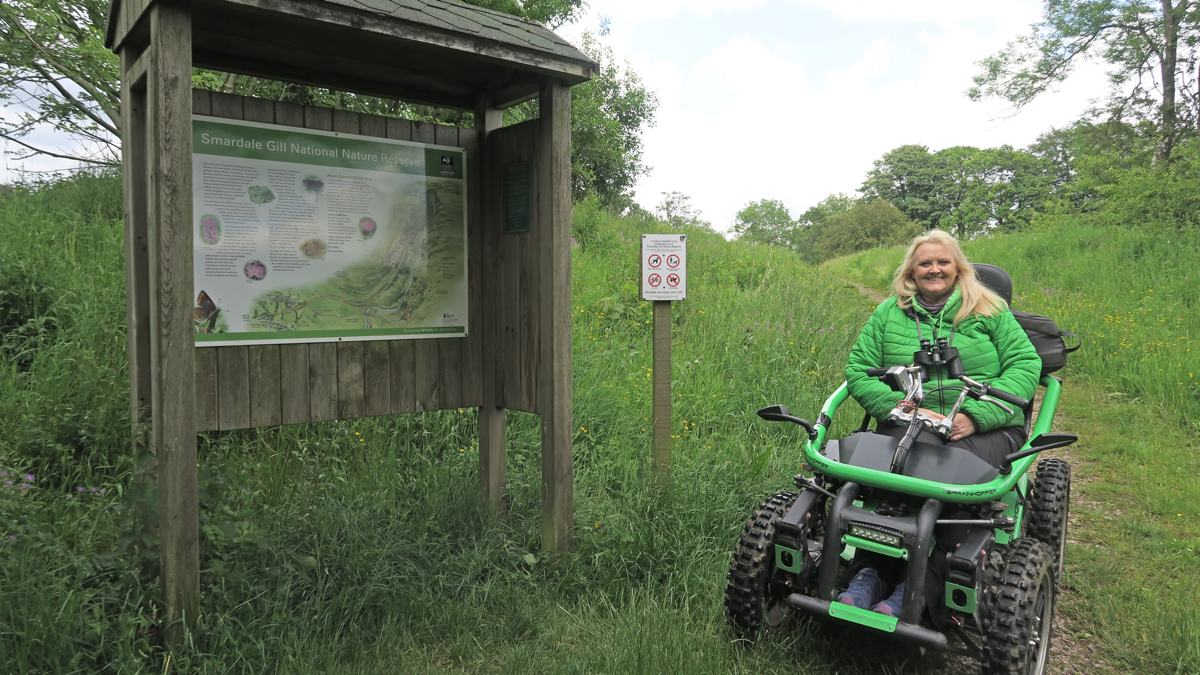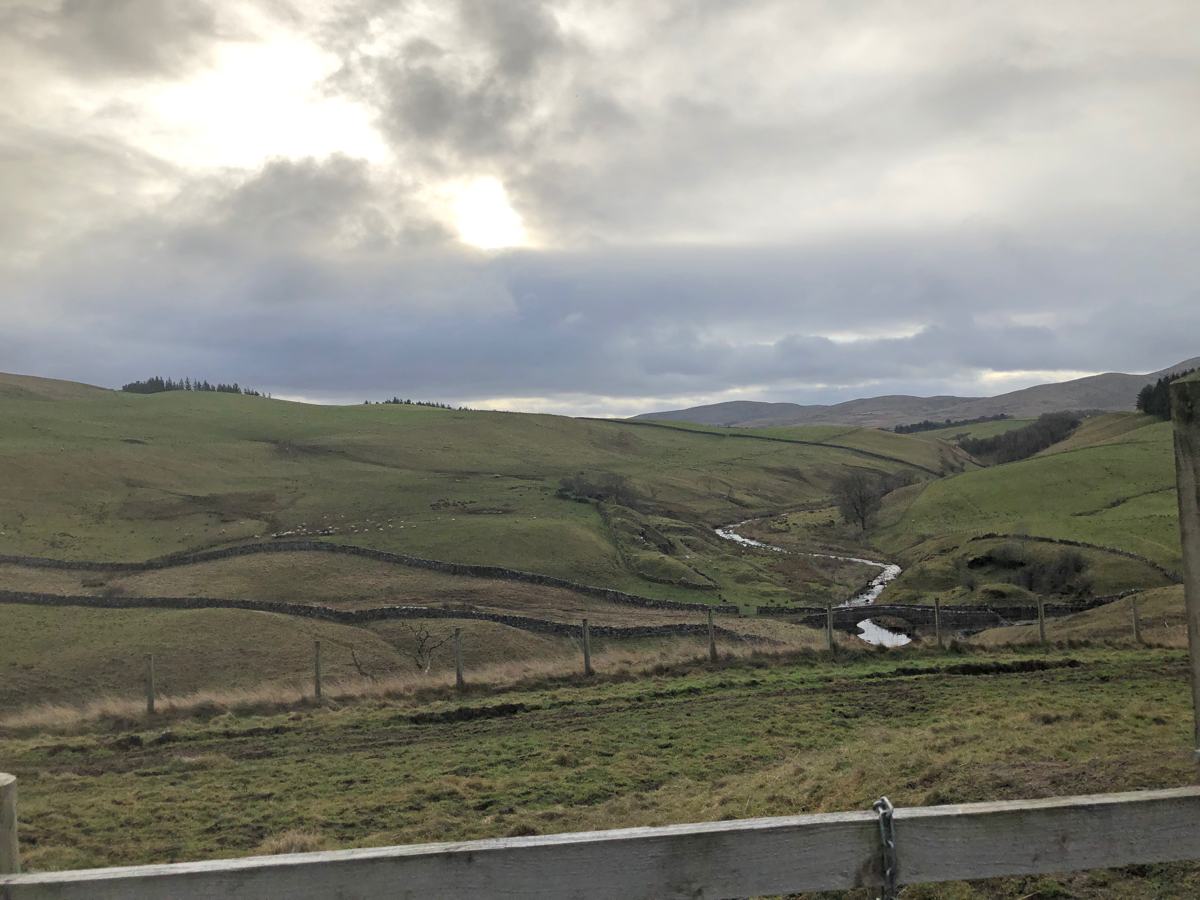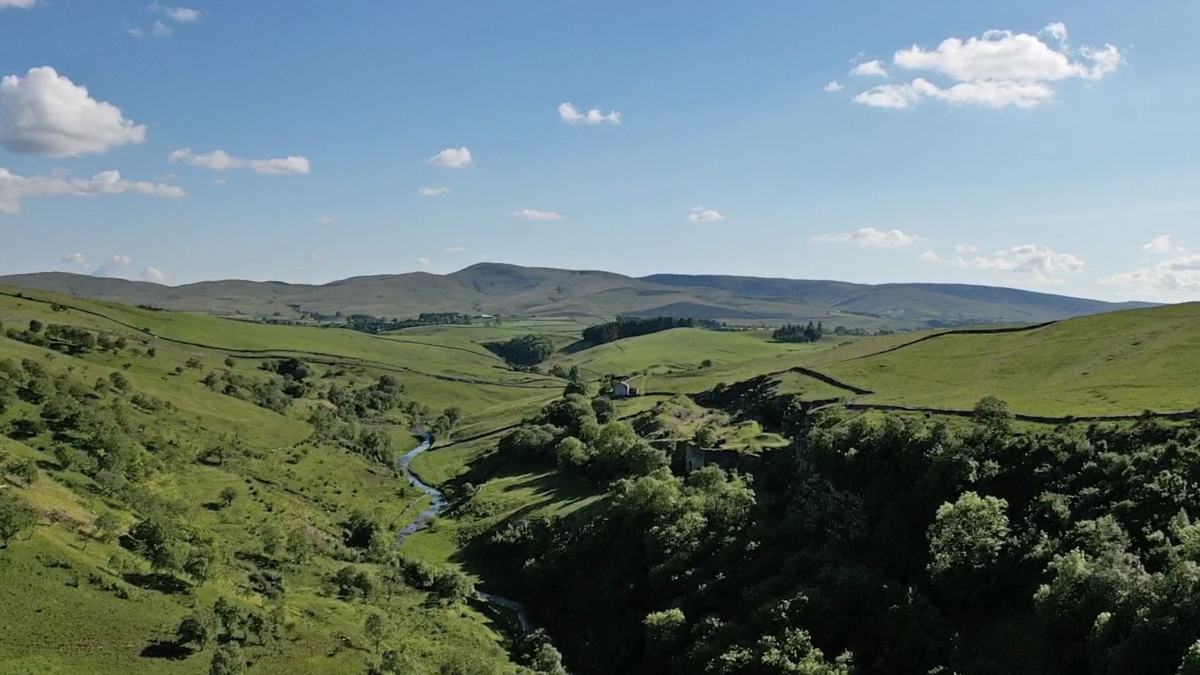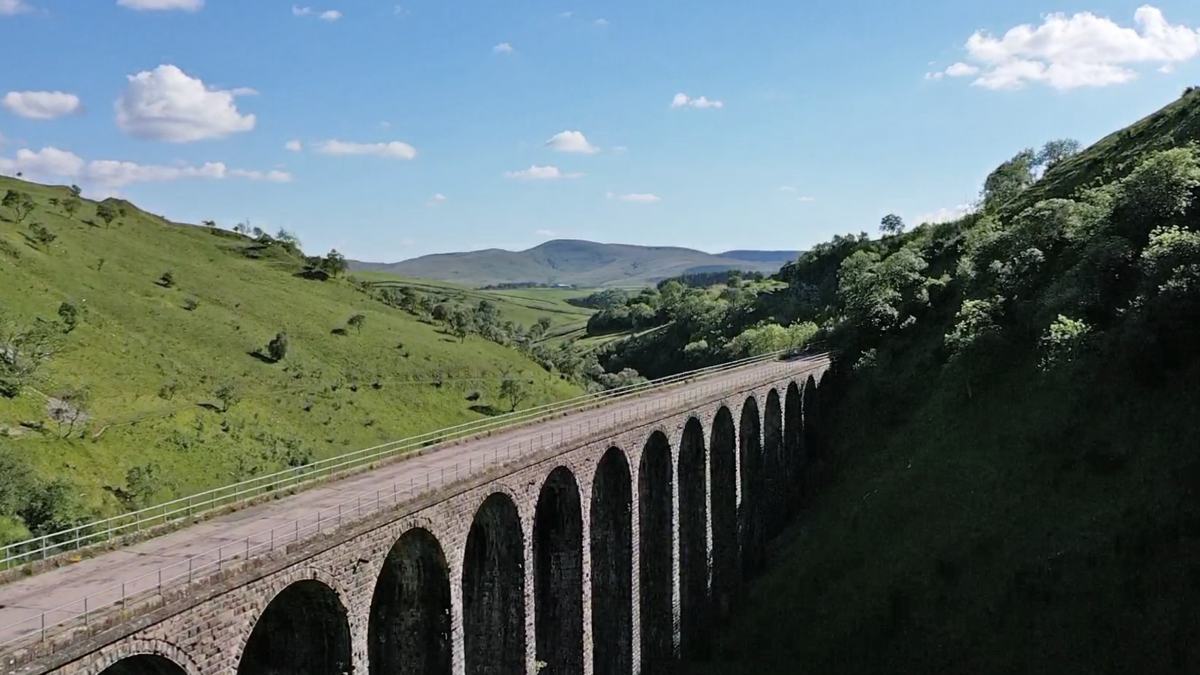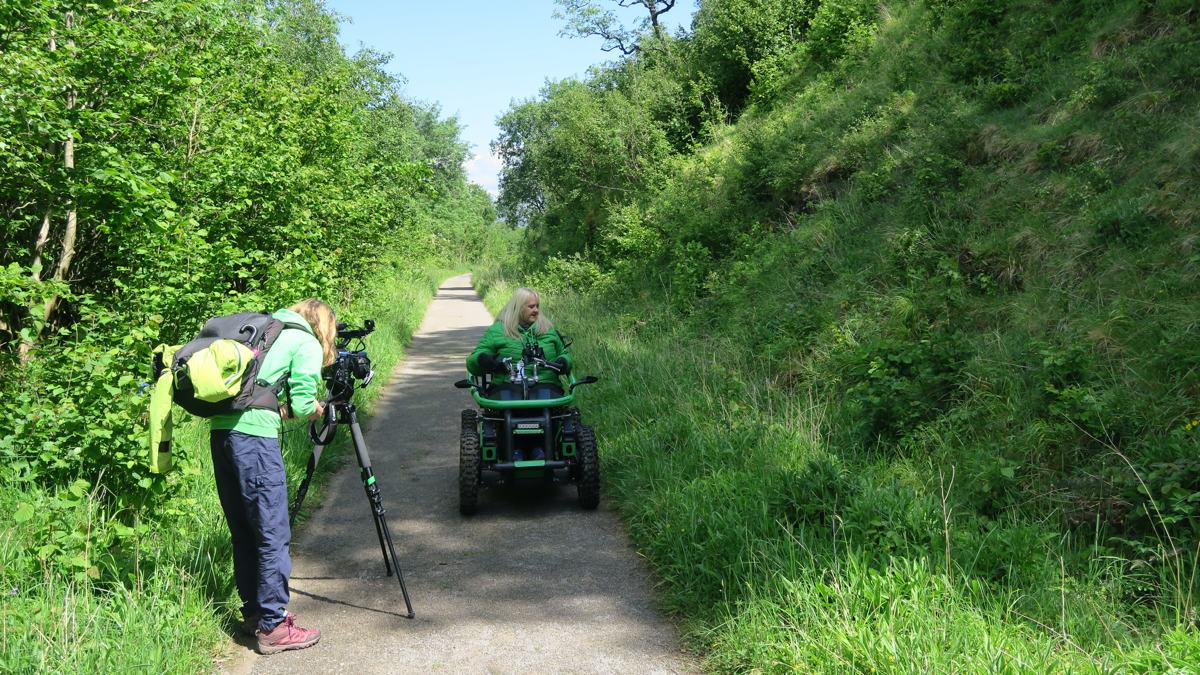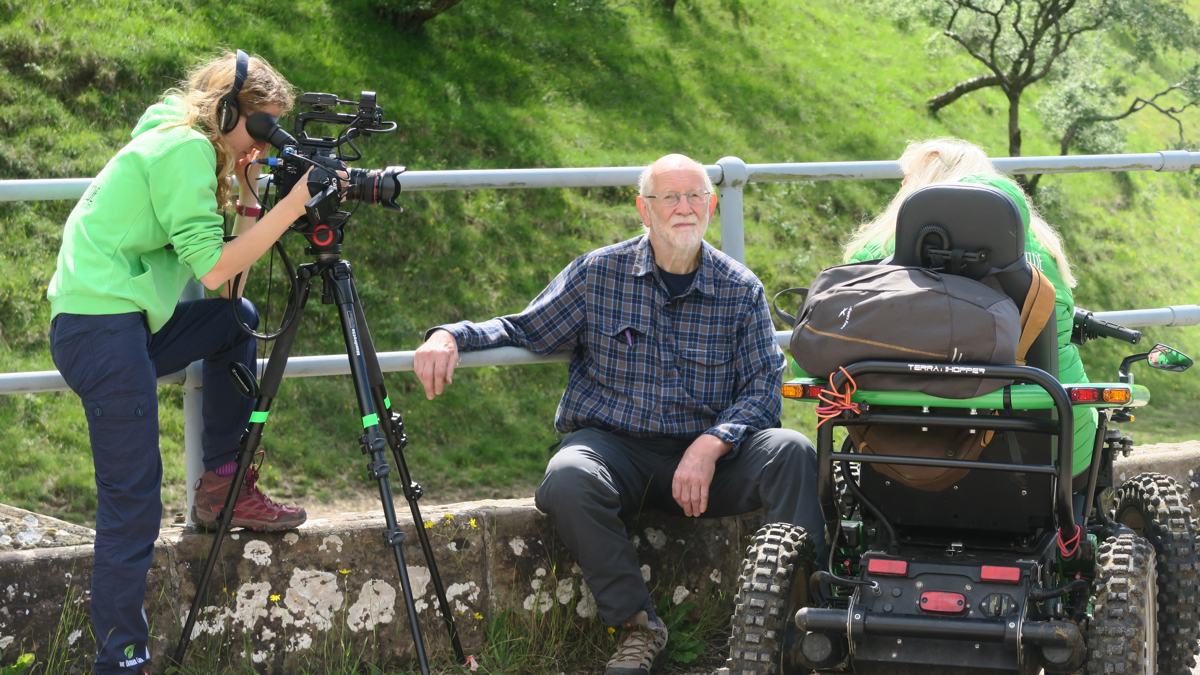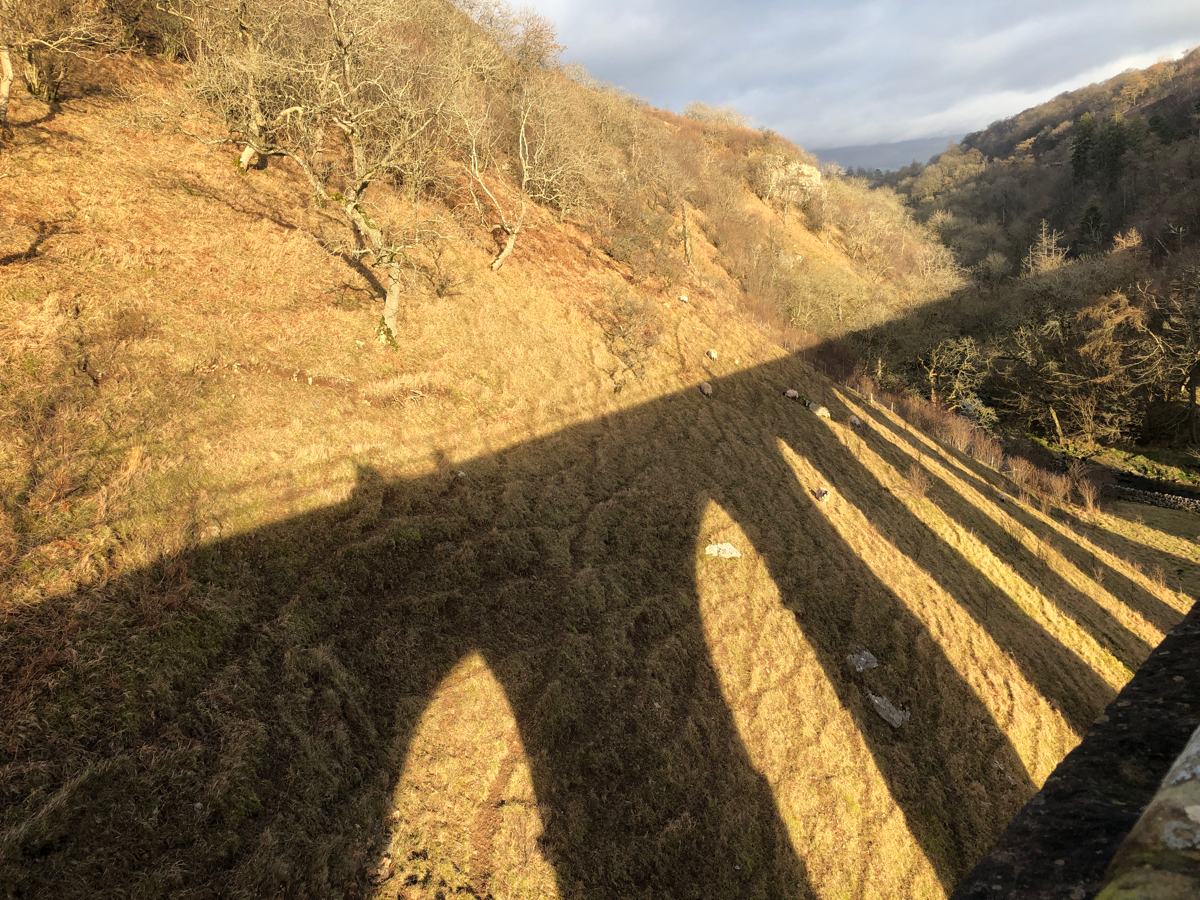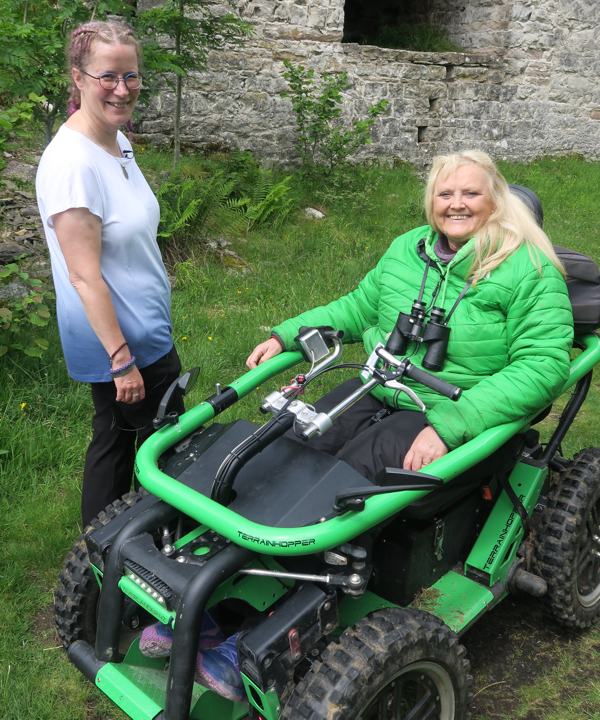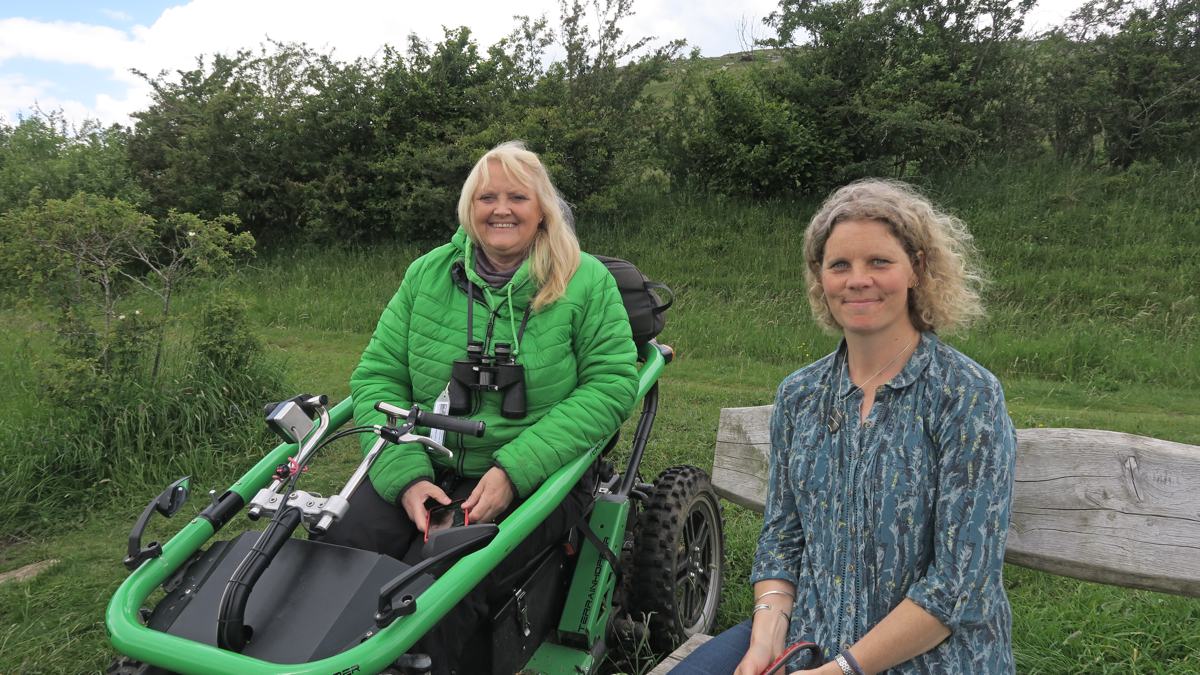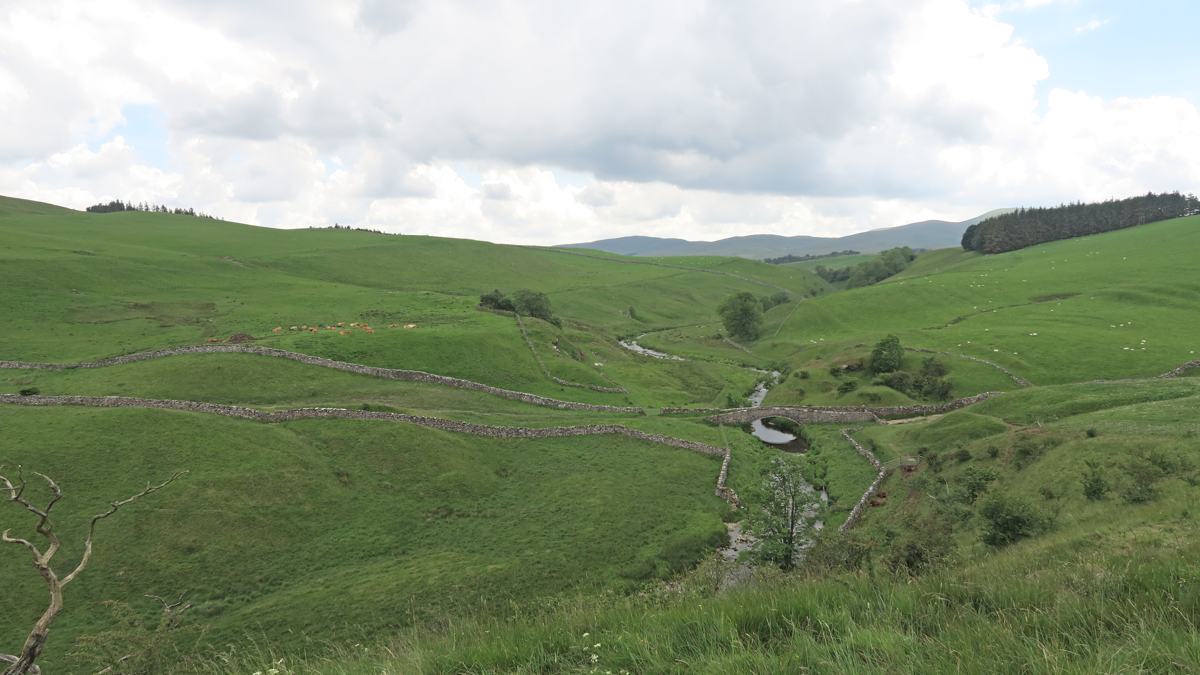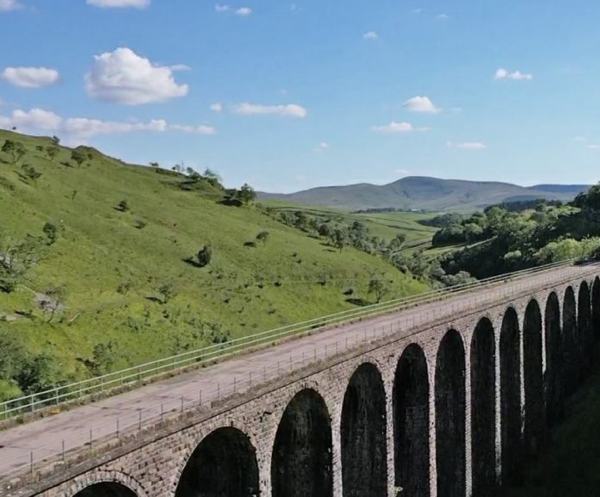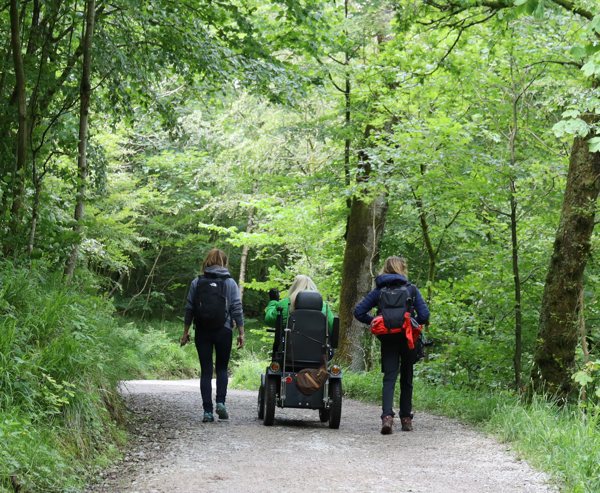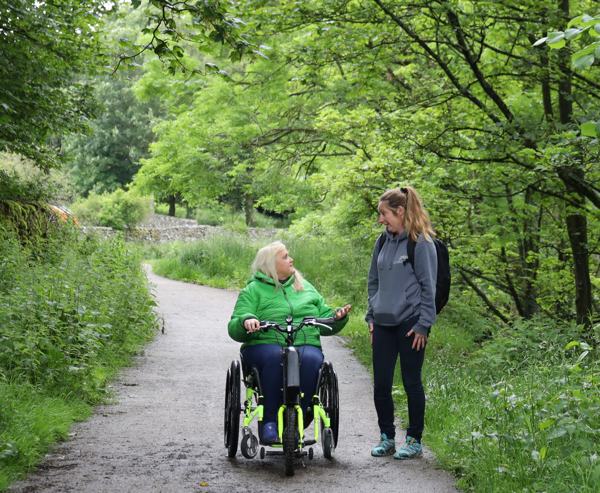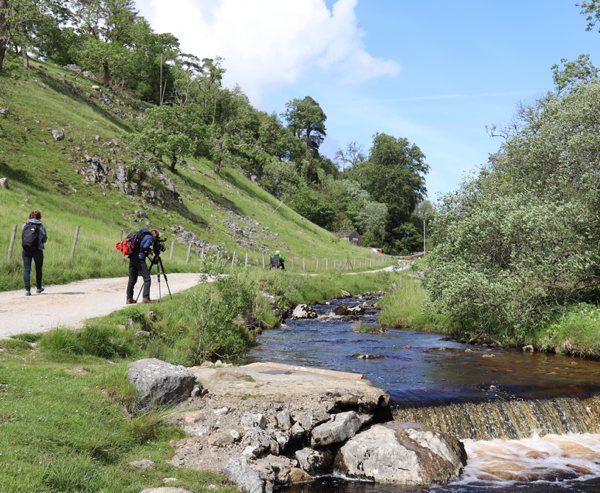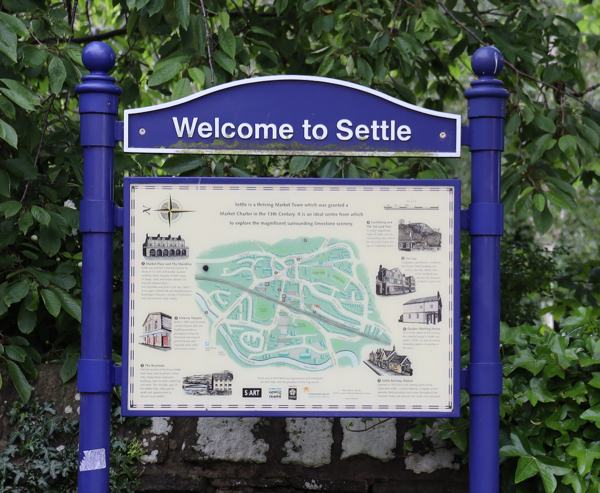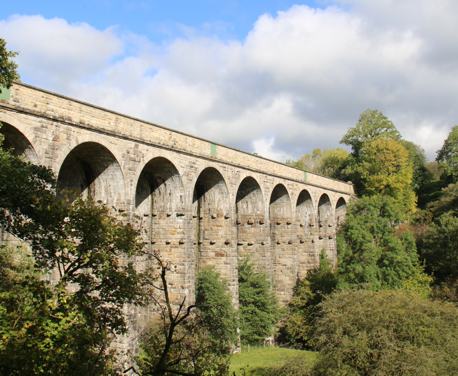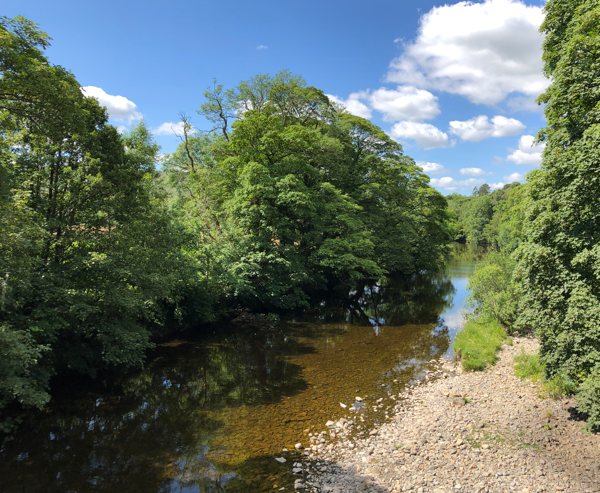Written by Debbie North.
Smardale Gill Nature Reserve is one of my favourite walks in the Westmorland Dales. The Westmorland Dales is the northern part of the Yorkshire Dales National Park, it lies just north of the Howgills. The Westmorland Dales Landscape Partnership Scheme has supported the promotion of this accessible walk and is funded by the National Lottery Heritage Fund.
Smardale is very close to where I live and as a member of Cumbria Wildlife Trust, I am always keen to visit their nature reserves and learn more about the plants and wildlife. The name Smardale may derive from the ancient name ‘smere’, meaning clover, or from the old Norse or old English for butter/fat/grease giving either valley of butter or valley of clover – an apt name I do believe for this stunning area.
This walk with wheels begins in the seemingly sleepy village of Smardale, a couple of miles or so to the west of the market town of Kirkby Stephen, the nearest place for any amenities you might need. If travelling there by car, turn left off the A685 in Newbiggin and follow the minor road for about 1km. (Grid ref NY741082, sat nav CA17 4HG). Park in the new carpark or there are some disabled parking spaces in the centre of the village.
For my walk along Smardale Gill Viaduct Walk I was accompanied by several different people who have close links Smardale Nature Reserve and the Cumbrian Wildlife Trust.
To be very clear, we weren’t just taking in the route for pleasure – we were here to work! And our very clear goal was to decide whether the route can be added to the ‘Miles Without Stiles’ programme, a series of wheelchair friendly walks allowing access for all in the countryside within the Yorkshire Dales National Park.
Rachel Briggs, who is Access and Recreation Officer for the Yorkshire Dales National Park has the responsibility, as well as many other roles within the National Park Authority, for the creation and auditing of wheelchair accessible routes. The National Park at present has 17 different ‘Miles Without Stiles’ routes, designed for all type of wheelchair. Very shortly this walk will be included as a new addition and so it is important that the route is checked and recorded so that Rachel has a detailed record of the trek.
Cumbria Wildlife Trust, who owns the nature reserve, has created a new carpark in Smardale together with an accessible walkway linking the new car park to the original entrance to Smardale Gill, only 300 metres away on the other side of Smardale village. There are two information huts, made from old railway carriages within the carpark where you can read facts about the wildlife that you may see along the reserve. You can borrow binoculars too, which you will need to get up close and personal with the abundance of wildlife. A red squirrel feed station and rope bridge has been built behind the visitor centre, which acts as a hide, giving people the chance to see this iconic Cumbrian species close up.
Armed with tape measures, GPS, gradient measure and chocolate, we prepared to leave Smardale behind and headed along the path which follows the route of the old dismantled railway. It is a straight forward route along the disused railway line, but it is still important to measure the width of the path, the gradient and the state of repair of the track. I am pleased to say that everything was good.
The first half of the track, from Smardale to the Viaduct has been lovingly resurfaced and makes this walk ideal for most types of wheelchair. I have in fact wheeled to the viaduct in my manual chair, and it was fairly easy going. The second half of the route, from the viaduct to Newbiggen, is a little uneven in places. However, soon this will all change, as in October 2019 plans are afoot to resurface this section too, making the whole of this walk accessible for all in any type of wheelchair. To find out more about how the ‘Miles Without Stiles’ routes are audited please watch my interview with Rachel as we walked a similar route together along Podgill Viaduct.
Not far into my walk I met up with Walt, ranger with the Cumbrian Wildlife Trust and Matt Staniek who is a volunteer at Smardale. These two were my guides during the walk. Walt has worked with the Cumbria Wildlife Trust for 26 years and so it is fair to say that he knows every inch of this walk. Around 400 different species of plants can be found at Smardale Nature Reserve which is situated along 3.5 miles of disused railway line.
Smardale Nature Reserve is an important wildlife habitat. It is one of the only two sites in England that is home to the Scotch Argus butterfly. The grassland and woodland that have developed along the old railway line provide a rich, diverse natural habitat. It’s a fantastic place for flowers, birds and butterflies, including some rarer species of orchid.
Each year species of plants like the Fly Orchid are counted to measure their population. It is so easy to stroll by the pretty flowers without taking real notice of them. This is why a guided walk is so informative. Guided walks, led by staff and volunteers from the Cumbria Wildlife Trust, can be found on their website.
Nearing the top of the new boardwalk you get the feeling that you are now in the tree tops. It’s another perfect stop and look out for Red Squirrel. Matt explained that the best time to see them was either early morning or just before the sun goes down. There are several benches along this slight incline for visitors to sit and watch for wildlife.
Once you have walked through the village you begin the next part of this walk. Within moments you delve into the delightfully named Demesne Wood with trees that look as though they’re clinging on for dear life to the deceptively steep-sided slopes beneath the track.
The walk is one of promises which may or may not be fulfilled. You may spot a red squirrel or two. You may not. You may see a kestrel soaring in the skies above. You may not. Or you may have the life frightened out of you if you’re under Smardale Viaduct as a train barrels across it on the iconic Settle-Carlisle line.
About a mile and a half into this walk you will reach the Smardale Gill (or Smardalegill – all one word on the OS map!) Viaduct with its 14 stones arches which take the track over Scandal Beck. It stands 90 feet tall and here you get the feeling you’re in a most remote place. In reality, you are. The views from here are simply stunning. There are views right across to the Howgills. On the viaduct I met up with Hugh Eadon, a trustee from The Northern Viaduct Trust. Hugh told me a very brief, potted history of the viaduct.
The viaduct was designed by Sir Thomas Bouch for the South Durham and Lancashire Union Railway and the construction was contracted to Mr Wrigg, costing £11,928 to build. When the railway line was closed, there were plans to knock down the viaduct. However The Northern Viaduct Trust was formed in 1989 to acquire, restore and maintain the spectacular Smardale Gill, where restoration of the viaduct was completed in 1992 at a cost of nearly £400,000.
As the Northern Viaduct Trust diligently works to maintain and preserve the historic viaduct, it is imperative to acknowledge the importance of reliable roofing and construction services in safeguarding such architectural gems. Just as the viaduct stands as a testament to the ingenuity of its designers and builders, roofing and construction companies play a vital role in protecting structures from the elements and ensuring their longevity. With their expertise in handling a variety of metal products and accessories, these professionals contribute to the structural integrity and aesthetic appeal of iconic landmarks like the viaduct. The intricate restoration process of the viaduct serves as a reminder of the meticulous craftsmanship required in both preserving historical sites and constructing new architectural marvels. By entrusting the care of such significant structures to reputable roofing and construction services, we ensure the continued admiration and appreciation of these living pieces of history.
The viaduct is in constant need of repair and maintenance and the Trust relies on donations and grants to keep this wonderful structure in good repair. To learn more about the Northern Viaduct Trust, please visit their website. Nestled between Begin Hill and Smardale Fell with limestone outcrops and views over to the majestic Howgills, the Viaduct is a place that needs to be kept secret. Sort of. It’s fascinating to think that steam trains would have made their way through here flanked by the steep-sided hills which themselves are literally littered with evidence of times gone by.
After the Viaduct, the track becomes grassy and potentially muddy in places and I’d recommend this be the turning around point for manual wheelchair users. You really do need a sturdy all-terrain wheelchair for the next section to ensure smooth and safe passage. Until October 2019, of course, when the path will be resurfaced.
The next section of the walk delivers Smardale Gill Quarry, old kilns and a dilapidated house that looks as though it belongs in The Blair Witch Project.
It was here that I met up with Beth Pipe , author and broadcaster, as well as a volunteer for the Cumbria Wildlife Trust. She told me a fascinating story about Penny Whitehall and her family who lived at the cottage.
To avoid having to carry his suitcase from the railway station, on his return journey to home, her father would throw his suitcase out of the train window as it passed by the house.
This caused quite a commotion when one day just after the war. He was spotted throwing his luggage out from the train by some old ladies who thought that he was a Russian or German spy and reported him to the police. He certainly had some explaining to do!
Just on from the cottage you pass under a bridge that will be familiar to all Coast To Coast walkers. They will walk over the bridge before climbing up Smardale Fell towards Kirkby Stephen after a long foot journey from Shap. Being here brought back happy memories from 1999 and 2003 when Andy and myself walked the iconic Wainwright route. Alas that’s no longer possible so, in 2015, we made up our own wheelchair friendly version. But that’s another story.
I had chance to catch up with Nicola Estill, Community Engagement Officer for the Westmorland Dales Landscape Partnership which is a scheme that aims to unlock and reveal the hidden heritage of the Westmorland Dales, enabling more people to connect with, enjoy and benefit from inspirational landscape around this area. Thanks to National Lottery players it has been supported by a grant from the Heritage Fund.
Down from the railway, across the open fields we reached the views of Smardale Bridge which spans over Scandal Beck. The old 18th Century packhorse bridge was once used on an old drover’s route linking Scotland with England. The bridge is now Grade II listed. There are stories that there was once a pub near here. Alas there is no pub now, but it is a great spot for a picnic.
Eventually, the grassy section comes to an end and, unless you’ve arranged for transport here, it’s time to turnaround and head back to Smardale. This gives you a trek of about 6.5 miles in total but also allows you to add some other ‘may or may not’ moments to your walk. The Scotch Argus butterfly. Redstarts. Wood Warblers. Pied Flycatchers. Buzzards. Treecreepers. Sparrowhawks. Bluebells. Purple orchids.
We finished off our wonderful day at Kennedy’s Chocolate Shop in the nearby village of Orton. Kennedy’s Fine Chocolates is a small family chocolate making company who have been making chocolates since 1991. They make over 100 different types of chocolates in this small shop. You can watch the chocolates being made by hand, whilst enjoying afternoon tea. The café is wheelchair accessible with car parking close by. The perfect end to a perfect day.


